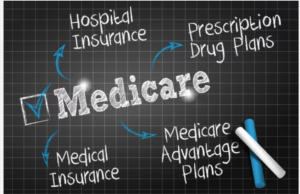
The recent cold-blooded murder of the UnitedHealth insurance executive has prompted a debate about the pros and cons of healthcare insurance. No one in their right mind should advocate murder of anyone, let alone because of a grievance with the healthcare industry. But it is good to better understand the healthcare system we live in, especially as it compares to alternatives in other countries.
There is no one better to assist us in that discussion than John C. Goodman, a healthcare economist who writes for The Independent Institute. Recently he reviewed and compared the healthcare system of Canada with the U.S. But before we compare different healthcare systems, we need to better understand problems that all healthcare systems face.
Three Problems in All Systems
Goodman says there are three problems with the doctor-patient relationship in all developed countries – regardless of the way the payment system is organized:
First, when a third party is paying the bill, neither the doctor nor the patient has any incentive to apply the kind of cost/benefit analysis that is normal in the purchase of any other good or service. In considering whether to obtain an expensive test (an MRI scan, e.g.), the incentive is to consider only the benefit. Since cost is irrelevant to the patient, a tiny benefit—no matter what the cost—is viewed as desirable.
Second, in a fee-for-service arrangement (such as exists in both the U.S. and Canada), the more services doctors perform, the higher their incomes. So, just as patients have an incentive to over-consume, doctors have an incentive to over-provide.
Third, there is malpractice liability, which is especially a problem in the U.S. A doctor who orders an unnecessary MRI scan faces no real penalty. But no matter how improbable, there is always a chance that a scan not ordered will fail to detect a problem that grows worse through time. Our legal system, therefore, provides incentives for too many tests and too many procedures, compared to a system in which costs would have to be justified by comparable benefits.
These are called perverse incentives in the language of economists. If they are not checked in some way, medical care becomes unreasonably expensive. That means higher premiums or higher taxes, depending on your healthcare system, or both. How do we check these perverse incentives?
The Canadian System
Canada checks these incentives by limiting resources. The typical Canadian general practitioner, for example, does not have radiology equipment and must send patients to a hospital for simple x-rays. The hospitals, in turn, operate under global budgets that limit spending, no matter what the level of demand. In other words, they put profits before patient care. This can happen in any healthcare system.
Canada ranks 25th of 29 countries on the number of MRI scanners per person. As a result, the wait for a scan is almost three months, and the wait until final treatment is more than six months. The government has decided to prevent overuse of MRI scanners by severely restricting the number of scanners that are available.
Canada’s system of limiting heath care resources and forcing doctors to ration care has many undesirable characteristics. The system favors high-income over low-income patients. It favors white patients over racial minorities. It favors city dwellers over rural residents. It favors the politically connected over those without connections. Arguably, there is more inequality in access to health care in Canada than there is in the United States.
You might suppose that in countries that impose rationing, such as Canada and the U.K., doctors are forced to be more efficient—prioritizing resources so that the most promising procedures are done first. But studies by the RAND Corporation found that this isn’t so. In Canada and Britain, for example, scholars found just as much unnecessary care (as a percent of the total) as they found in the United Staes.
Then there is fraud, which is a special problem in government-administered programs. In Medicare and Medicaid, for example, fraud is estimated to consume at least $100 billion a year. Hospital upcoding (claiming a higher level of patient severity in order to obtain a higher insurance payment) is another problem. One study estimates that increased upcoding (relative to a decade earlier) was associated with $14.6 billion in hospital payments. Although doctors are the biggest critics of claim denials, hospitals are by far a bigger problem.
The Pre-Authorization Problem
As a doctor, I can tell you that pre-authorization is the bane of practicing medicine. It slows down your treatment of the patient and sometimes prevents you from doing what you know is needed. But there is a role for pre-authorization to hold doctors accountable for their treatment decision-making.
Goodman explains: “An important tool private insurers use to avoid unnecessary spending and inappropriate care is to require preauthorization for a particular drug, therapy, or procedure. Doctors tend to regard these procedures as burdensome and irksome. Yet only 7.4% of requests by patients in Medicare Advantage and Medicaid managed care plans are denied. Moreover, in the vast majority of appeals (83.2%), the initial denials are overturned.”
It’s easy to think other countries have better healthcare, but the facts don’t support that claim. All countries with government-provided healthcare (socialized medicine) suffer from the same problem: rationed care. If you can’t get in to see the doctor, or the government won’t allow the treatment he recommends, your “free healthcare” isn’t really free.
The public seems to understand this. Despite occasional complaints, more than two-thirds of Americans rate their health insurance as “good’ or “excellent.” And that holds for all kinds of insurance: employer plans, (Obamacare) marketplace plans, Medicare and even Medicaid. Even among people who say they are not in good health (and who, presumably, need medical care), a substantial majority give positive ratings to their health plans. Only a tiny percent rate their insurance as “poor.”



